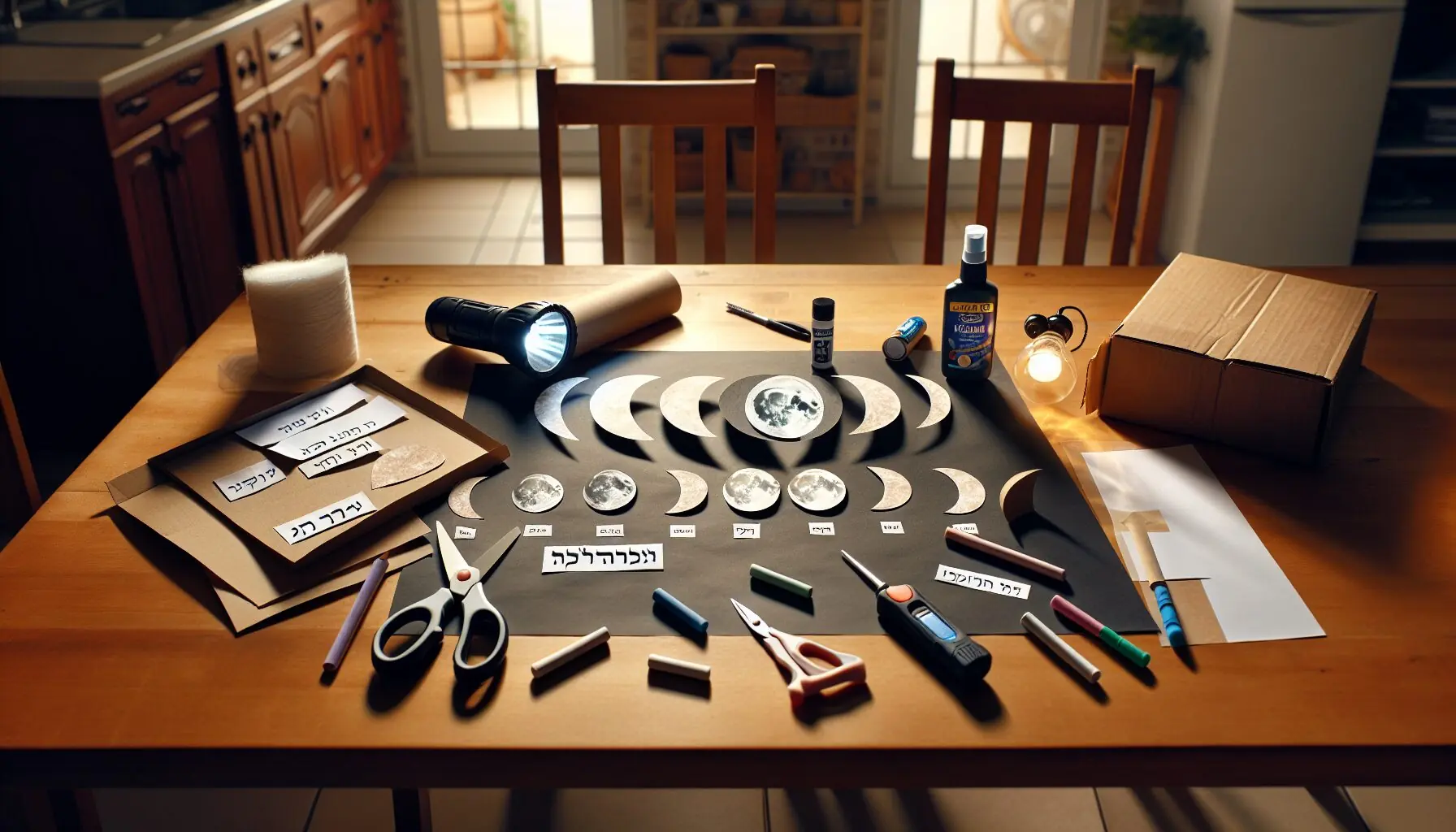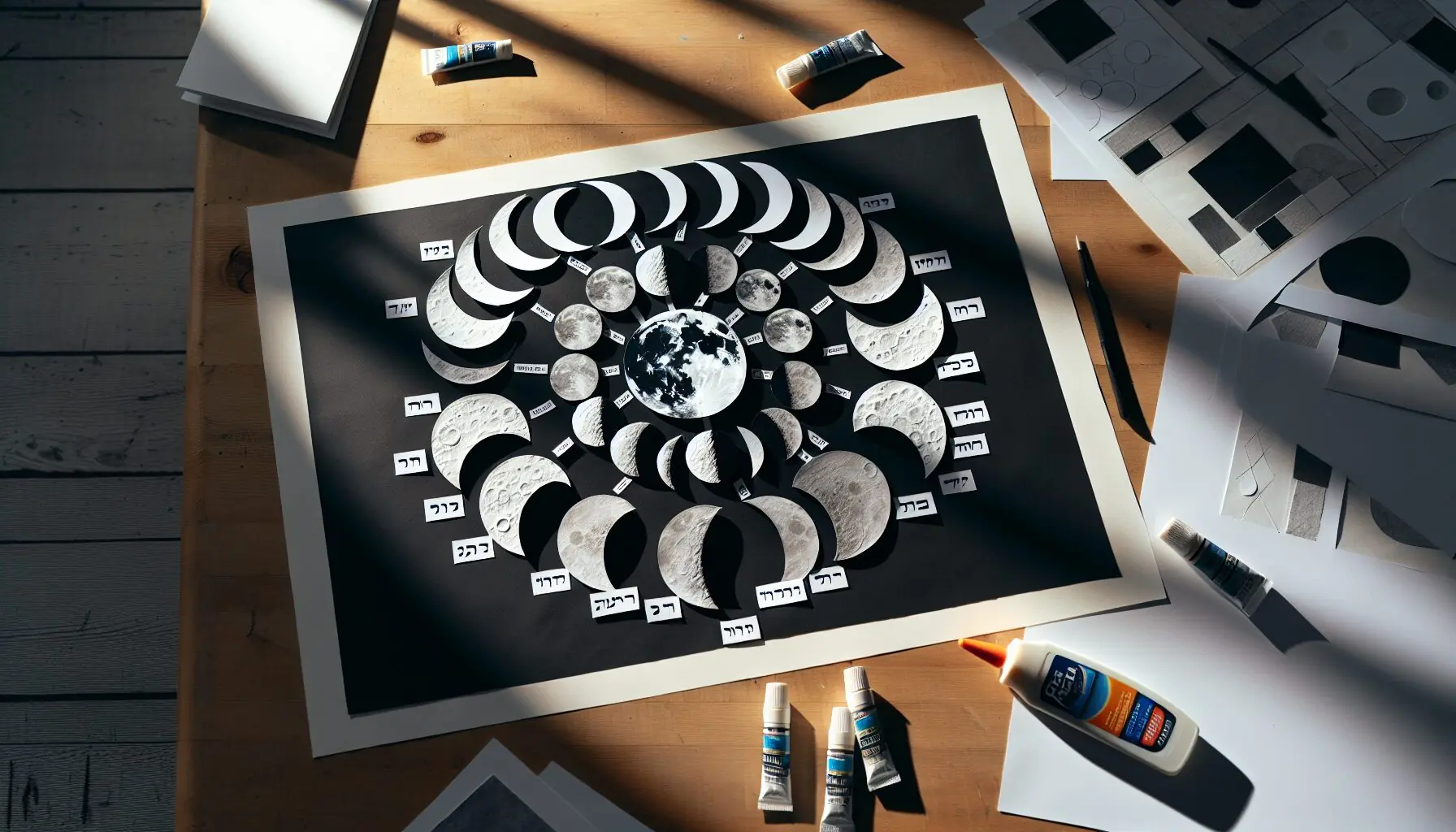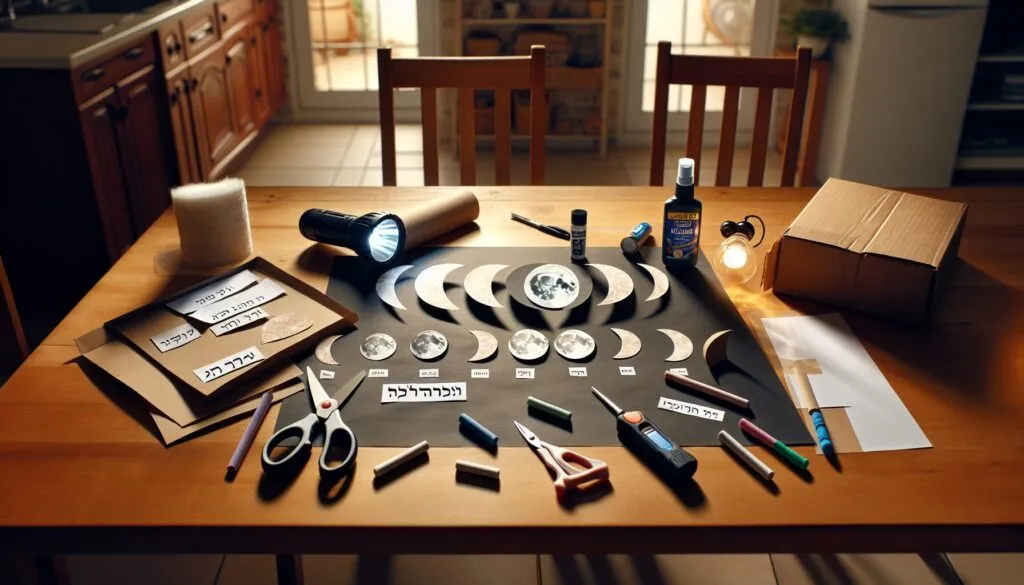Introduction
Welcome to ‘Moonlit Night Adventures’! As the night sky dazzles, what better way to blend learning with wonder than by exploring the phases of the moon in Hebrew? This fun and educational blend of scientific observation and vocabulary expansion aligns beautifully with what many Grade 1 curriculums include in their science focus on astronomy.
Understanding the moon’s phases not only enriches a child’s knowledge but also kindles a curiosity that transcends textbook learning. Moreover, introducing moon-related vocabulary in Hebrew serves a dual purpose of enhancing language learning and nurturing multilingual skills.
Let’s illuminate your night!

Interactive Moon Phases Activity
Ready to transform your backyard into a lunar learning lab? Here’s an easy and impactful activity: ‘Phases of the Moon in Hebrew’ Craft Night.
Materials Needed:
- Black construction paper
- White chalk
- Flashlight
- Printed or drawn phases of the moon in English and Hebrew
- Glue stick
- Scissors
- 20 minutes of sky-gazing time
Instructions:
- Help your child cut out moon shapes representing new moon, crescent, quarter, gibbous, and full moon.
- Utilize your flashlight to mimic sunlight and observe how the different phases are illuminated by adjusting positions.
- Use white chalk on black paper to create drawings of each moon phase.
- Label each phase in both English and Hebrew.
- Glue the paper moons in sequence, creating a beautiful moon phase collage.
Tip:
Use storytelling to weave in lunar myths or tales from different cultures to make learning more vivid and memorable. Adaptations like using simpler words or more visuals are great if your child is younger.

Engaging in the ‘Phases of the Moon in Hebrew’ activity is more than just a crafty endeavor. It’s a brilliant way to enhance your child’s language learning and multilingual skills, while also stimulating cognitive development by encouraging scientific exploration.
Learning Hebrew vocabulary related to the moon helps your child grasp the concept of multilingualism early, fostering an appreciation for languages and cultures worldwide. It can also bolster emotional growth as they share creative stories and practice empathy through storytelling, strengthening your bond.
There’s a special kind of magic in turning scientific facts into fun narratives that reflect curiosity and innovation, allowing your child to envision learning as an exciting and endless adventure.

Related Posts:
- [Oct, 27] Storytelling Dress-Up: Unleash Imaginative Play
- [Oct, 27] Tackle the Tall Slide: Building Courage and Resilience
- [Oct, 27] Cooking for Culture: Simple Recipes to Foster Empathy
- [Oct, 27] Seasonal Clothing Adventure for Physical Activity and Healthy Living
- [Oct, 27] Learning About Nocturnal Animals
